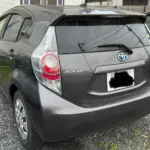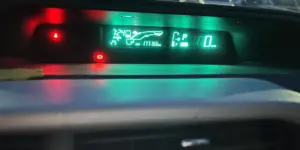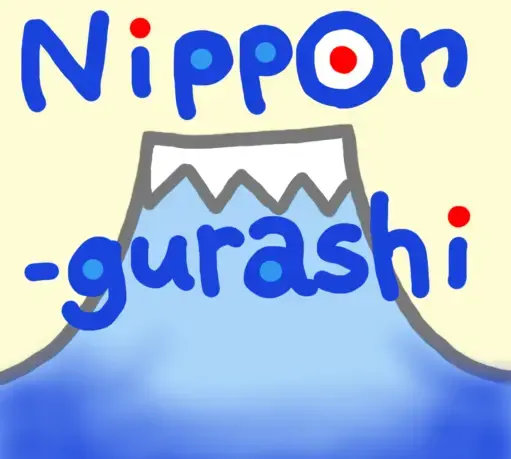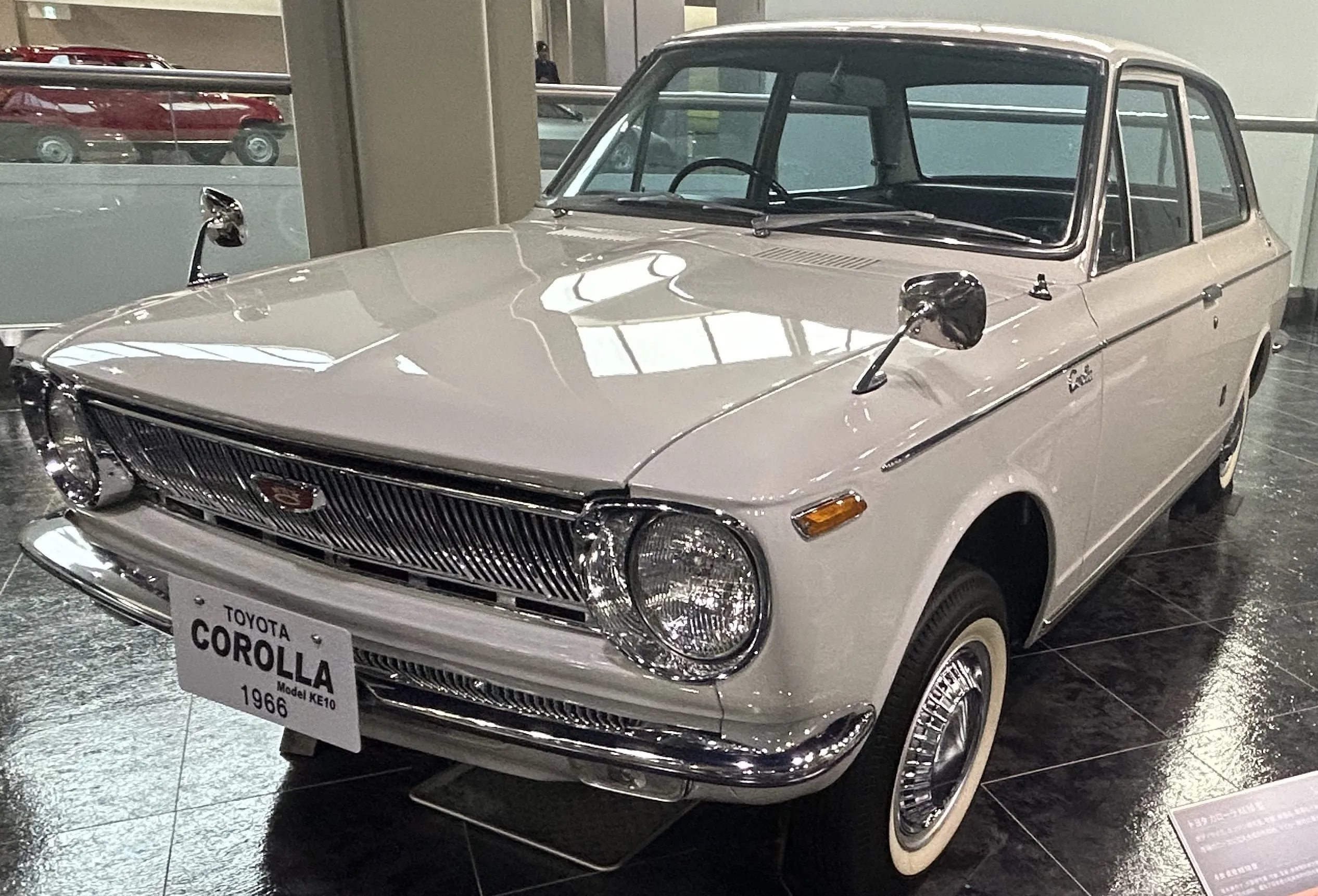I compiled lists of Japanese words about car parts and related matters for Japanese learners who are interested in the automotive industry and who want to know more vocabularies. I also added the information about ETC for people who are planning to use a rental car in Japan in the future.
(目次=Table of contents)
American and British English and Wasei-eigo are all Mixed
和製英語(wasei-eigo) means Japanized English. There are a lot of Japanese words that may sound like English, but the meanings are not the same as that of English in practice. Those words are called 和製英語(wasei-eigo) in Japanese. “Wasei” literally means made in Japan or Japanese made and “eigo” means English. If you want to know more about wasei-eigo, please check this article as well.
A lot of Japanese words related to auto parts are written in katakana influenced by English. It is interesting that some words were derived from American English and some were derived from British English. I think トランク(toranku) and ボンネット (bonnetto) are good examples.トランク(toranku) is from the word, “trunk” that is mainly used in the U.S. and Canada but not in the UK, Australia and New Zealand where “boot” is the preferred term. On the other hand, ボンネット(bonnetto) is from the word, “bonnet” that is commonly used in the UK, but “hood” is used in the U.S. and Canada instead of bonnet.
| 日本 (Japan) | the U.S. and Canada | the UK, Australia and New Zealand |
|---|---|---|
| トランク(toranku) | trunk | boot |
| ボンネット(bonnetto) | hood | bonnet |
If all car parts in Japanese were from either American or British English, it might have been easier for English speakers to memorize those Japanese words. However, there are also wasei-eigo for some car parts, and many Japanese people believe those are English words because they sound like English (at least to the Japanese). For example, フロントガラス (furonto garasu=front glass) means windshield in American English and windscreen in British English.
Vocabularies List of Car Parts in Japanese
Exterior parts (Front side)

| body | 車体 |
| windshield, windscreen | フロントガラス |
| hood, bonnet | ボンネット |
| windshield wiper, windscreen wiper | ワイパー |
| tire, tyre | タイヤ |
| headlight,headlamp | ヘッドライト |
| license plate, number plate | ナンバープレート |
| bumper | バンパー |
| mirror, sideview mirror, wing mirror | サイドミラー 、ドアミラー |
Exterior Parts (Rear side)

| antenna, aerial | アンテナ |
| sidelight | パーキングライト |
| flashers, hazard lights, emergency lights | ハザードランプ |
| rear light, rear lamp | テールライト、 テールランプ |
| brake light | ブレーキライト、 ブレーキランプ、 ストップランプ |
| trunk, boot | トランク |
| fuel filler, fuel cap | 給油口、 燃料給油口 |
| muffler, silencer | マフラー |
| exhaust pipe, tail pipe | 排気管 |
Interior Parts
| driver’s seat | 運転席 |
| passenger seat | 助手席 |
| back seat, rear seat | 後部座席 |
| child seat, child safety seat | チャイルドシート |
| third row seating | 三列目シート |
| head restraint, headrest | ヘッドレスト |
| seatbelt | シートベルト |
| steering wheel | ハンドル |
| turn signal, blinker | ウィンカー |
| horn | クラクション |
| honk, honk the horn | クラクションを鳴らす |
| gas pedal, accelerator | アクセル、 アクセルペダル |
| brake pedal | ブレーキ、 ブレーキペダル |
| pedal emergency brake | フットパーキングブレーキ |
| parking brake, emergency brake, handbrake | ハンドブレーキ、 サイドブレーキ、 パーキングブレーキ |
| engine brake | エンジンブレーキ |
| clutch pedal | クラッチペダル |
| gear stick | シフトレバー、 変速レバー |
| rear-view mirror, driving mirror | バックミラー、 ルームミラー |
| backup camera | バックモニター、 バックカメラ |
| air conditioner | エアコン |
| defroster | デフロスター |
| airbag | エアバッグ |
| GPS, car navigation system | カーナビ、 カーナビゲーションシステム |
| glove compartment, glovebox | ダッシュボード、 グローブボックス |
| central locking | セントラルロッキング、 集中ドアロック |
| tonneau cover | トノカバー、 荷室の目隠しカバー |
Parts in Engine Compartment
| engine | エンジン |
| fuel tank | 燃料タンク |
| fuel cell stack (FC stack) | 燃料電池タンク |
| coolant | 冷却水 |
| jumper cables | ブースターケーブル |
Related to Car Systems Including Instrumental Panel

| instrument panel, dashboard, fascia | メーターパネル |
| indicator | インジケーター、 メーターパネルの表示灯 |
| warning light | 警告灯 |
| fuel gauge | 燃料計、 ガソリンメーター |
| speedometer | 速度計、 スピードメーター |
| odometer, mileometer | 積算走行距離計、 オドメーター |
| temperature gauge | (冷却水の)温度計 |
| low fuel light | 給油ランプ、 ガソリンランプ、 燃料残量警告灯 |
| estimated miles to empty | 走行可能距離、 航続可能距離 |
| tire-pressure monitoring system | タイヤ空気圧センサー |
| immobilizer, theft protection | 車両盗難防止装置 |
| self driving function, autonomous driving function | 自動運転機能、 自動走行機能 |
| advanced driver-assistance system | 運転支援機能、 自動運転アシスト |
| park assist system | 駐車支援システム |
Car Types and Related Words
| stick shift, manual car, manual transmission vehicle | マニュアル車、MT |
| automatic car | オートマ車、AT |
| convertible, convertible car | オープンカー |
| rental car | レンタカー |
| one-way rental | 乗り捨て方式の |
| tow truck | レッカー車 |
| hybrid vehicle, hybrid car | ハイブリッド自動車(HEV) |
| electric vehicle (EV) | 電気自動車(EV) |
| fuel cell vehicle (FCV) | 燃料電池自動車(FCV/FCEV) |
| hydrogen internal combustion engine vehicle (HICEV) | 水素エンジン自動車(HICE/HICEV) |
Fuel, Car Damages, Traffic Violations, and etc.
| gas, petrol, gasoline | ガソリン |
| gas station, petrol station | ガソリンスタンド、ガソスタ |
| refuel | 給油する |
| high-octane gas, high-octane petrol, premium gas, premium petrol | ハイオクガソリン |
| regular gas, regular petrol | レギュラーガソリン |
| diesel oil, diesel fuel | 軽油 |
| kerosene, paraffin oil | 灯油 |
| EV charging station | EV充電スタンド、 EV充電スポット |
| freeway, motor way, high way | 高速道路 (高速自動車国道) |
| toll road, express way | (一般)有料道路 |
| rest area | サービスエリア(SA)、 パーキングエリア(PA) |
| run out of gas, be out of gas | ガス欠 |
| engine stall | エンスト |
| scratches, scrapes | 擦り傷 |
| dent | へこみ |
| cracks | (窓ガラスの)ひび割れ |
| flat tire, puncture, flat tyre | (タイヤの)パンク |
| drunk driving, drunken driving | 飲酒運転(酒気帯び運転、 酒酔い運転) |
| distracted driving | わき見運転 |
| drowsy driving | 居眠り運転 |
| tailgating, road rage | あおり運転 |
| running a red light, ignoring a red light | 信号無視 |
| wrong-way driving | 逆走 |
| car accident | 交通事故 |
| hit-and-run (direct contact with a person) | ひき逃げ |
| hit-and-run (everything else i.e. including hitting a car with a person inside) | 当て逃げ |
| traffic jam | 交通渋滞 |
| blind zone, blind spot | 死角 |
| pedestrian | 歩行者 |
| car exhaust | (車の)排気ガス |
| fuel economy, fuel efficiency | 燃費 |
| driver’s license, driving license | 自動車運転免許証 (運転免許証) |
| international driver’s license | 国際運転免許証、 国外運転免許証 |
| vehicle inspection certificate, MOT test certificate | 車検証、 自動車検査証 |
| car insurance | 自動車保険 |
Bicycle, Motorcycle, and etc.
| bicycle, bike | 自転車 |
| motorcycle, motorbike | バイク、 オートバイ、 自動二輪車 |
| moped | 原付バイク、 原動機付自転車 |
| scooter | スクーター |
| cross bike | クロスバイク |
| mountain bike | マウンテンバイク |
| road bike | ロードバイク |
| pedelec, EPAC(electronically power assisted cycle) | 電動アシスト自転車 |
| tricycle | 三輪車 |
| unicycle | 一輪車 |
What is ETC and an ETC Card?
If you have traveled in Japan by using a rental car, you might have been asked if you needed an ETC card at a car rental shop. ETC stands for Electronic Toll Collection System that is installed at an entrance and exit of highway in Japan. Japanese rental car shops have cars with ETC equipped. It is not necessary if you are not going to use the highway during your trip. Only people who are planning to drive a long distance by highway need to consider whether to rent an ETC card* at a car rental shop or not. Personally, I recommend you rent an ETC card since the payment of tolls is easier and you can also save time.
*Even if your rental car has ETC equipment, you cannot use ETC lanes at an entrance and exit of the highway without an ETC card. The toll of the highway is recorded in the ETC card, and you need to pay the amount at the rental car shop when you return the car to them.
What is the Merit of Using ETC ?
Before addressing the merits of using ETC, let me explain about the gates of the highway in Japan. There are two different types of gates for an entrance and exit at the highway. One is 一般レーン (ippan rēn) which means regular lane or general lane in English, and the other is ETCレーン (ETC rēn) which means ETC-only lane. Over 90% of drivers in Japan use ETC in order to save time. Here are the differences between using the regular lane and ETC-only lane.
In Case of Using a Regular Lane
Drivers who use a regular lane need to stop their cars temporarily at the entrance and take a ticket. You need to submit the ticket when you exit the highway so keep it safe. Drivers who have passed the regular lane when they entered the highway must also use the regular lane again when they exit. Drivers have to stop again at the exit and pay a toll with the ticket. You can usually choose the payment method, cash or credit card, but you need to be careful because some areas of the highway, toll road, or express way are cash only.
In Case of Using an ETC-only Lane
Drivers need to slow down driving speed to 20km/h (approximately 12.5mph) before entering the ETC lane on the highway and go forward with the same speed. They confirm your ETC equipment and card so that the gate bar will open automatically while you are driving.
You need to do the same thing when you exit the highway. Slow down driving speed to 20km/h before entering the ETC lane and go forward with the same speed. They confirm the information of your driving distance and toll. The gate bar will open automatically while you are driving.
Merits of using ETC are as follows:
- (1) You can save time since you don’t need to stop temporarily at the gates.
- (2) You don’t need to prepare cash or credit card when you exit the highway.
- (3) There are some toll discounts depending on what time you drive (usually at midnight and weekends).
- (4) There are ETC-only toll plazas*² that only drivers with ETC can pass through.
- *² ETC-only toll plazas only have ETC lanes, there are no regular lanes included. The number of ETC-only toll plazas has been increasing since highway companies in Japan are trying to save costs and alleviate traffic congestion.
What is the Demerit of Using ETC?
You usually need to pay ¥300~1,100 yen when you rent an ETC card at a car rental shop in Japan. Some rental car companies lend you an ETC card for free of charge, so it’s better to check before making a reservation.
This is not a demerit, but you need to remember that you cannot use ETC at some toll roads and express ways and you need to pay the toll by cash.
This is a tip for people who rent an ETC card. ETC equipment can be seen from outside of a car, so there is a possibility that your ETC card will be stolen. In general, Japan is well known to be a safe country, but you need to know that there were 22,934 cases of car break-in theft in 2024 according to Criminal Investigation Bureau of National Police Agency in Japan. I recommend you remove your ETC card from ETC equipment and take it with you when you leave your rental car for a long time just in case. (>_<)!
If you are curious about driving in Japan and want to learn traffic rules, these books are also helpful for you. The book titles are linked with Amazon.com.
LEARN JAPAN´S TRAFFIC RULES: WITH VIDEO LESSONS
References
East Nippon Expressway Company Limited (in Japanese) https://www.driveplaza.com/etc/etc_guide/
National Police Agency (in Japanese) https://www.npa.go.jp/publications/statistics/index.html

